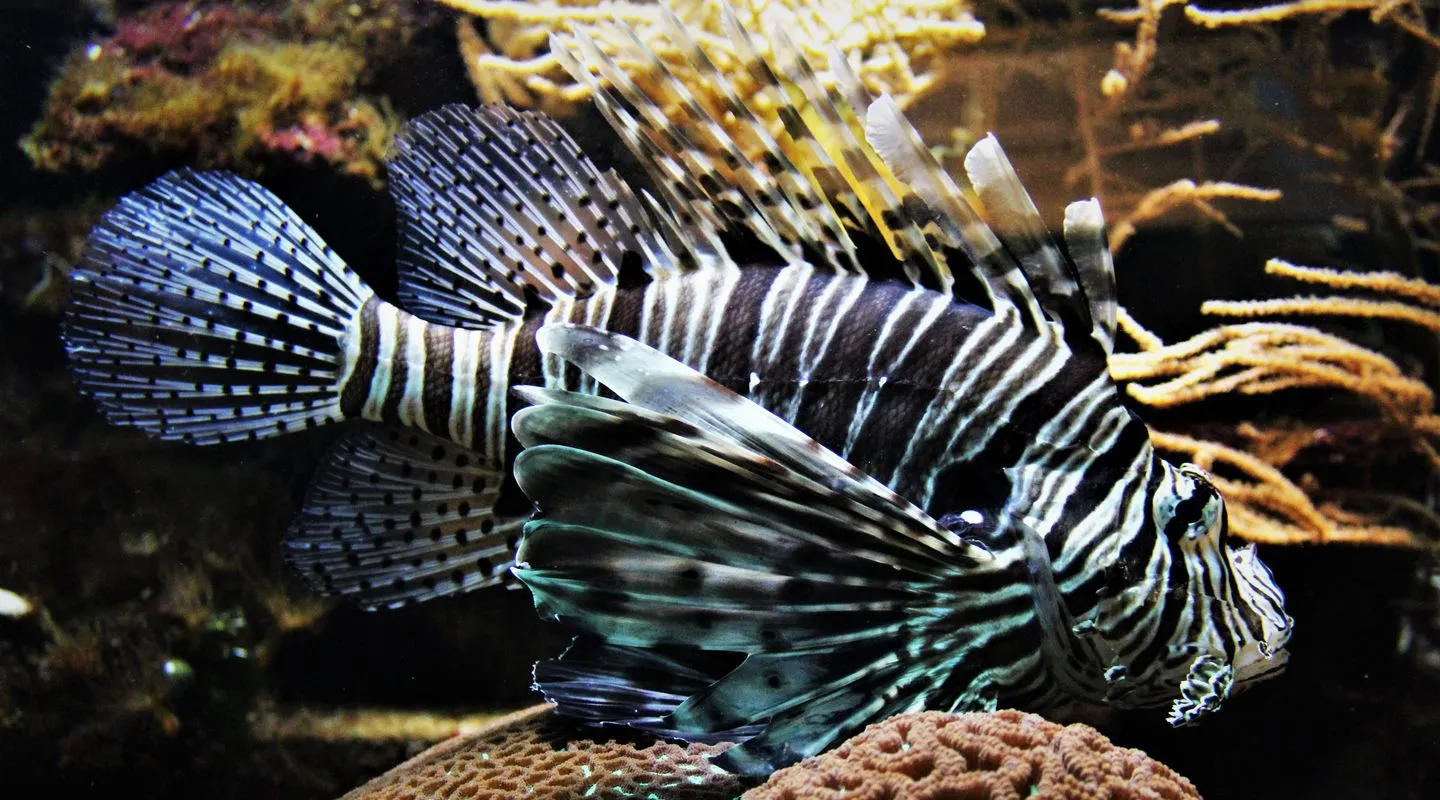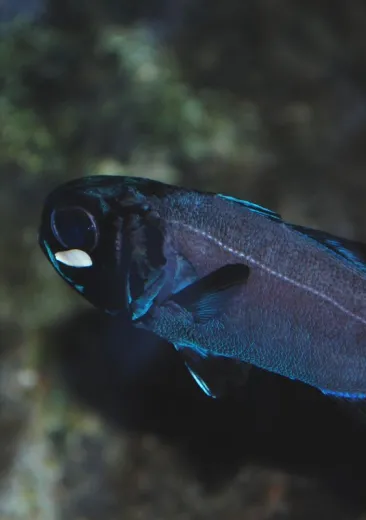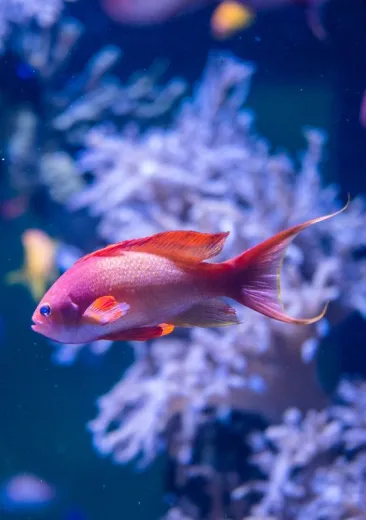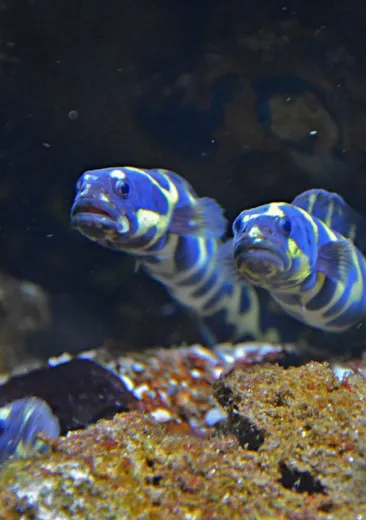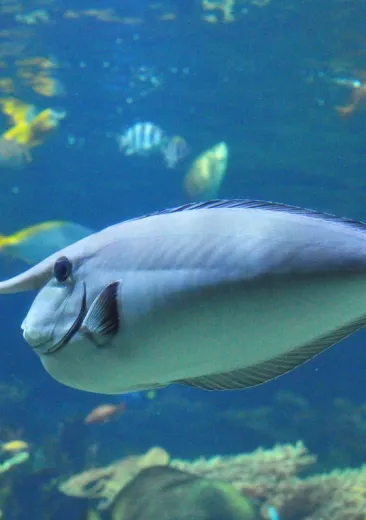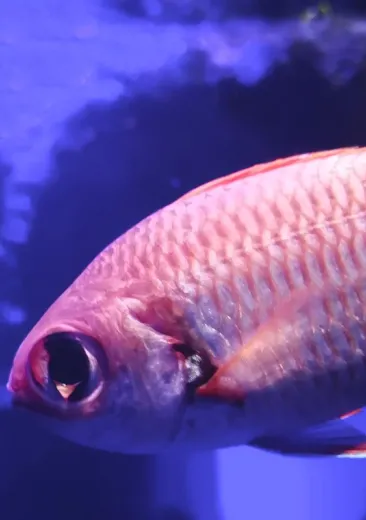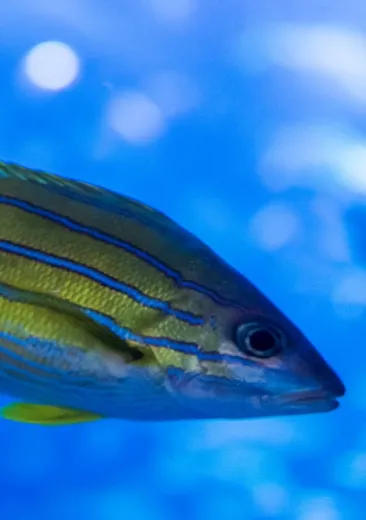The red lionfish is at the top of the food chain. This venomous species has almost no predators except for the bluespotted cornetfish, some groupers and the giant trevally, which explains its proliferation in the Caribbean Sea. It has become an invasive species and interferes with the ecosystem of coral reefs.
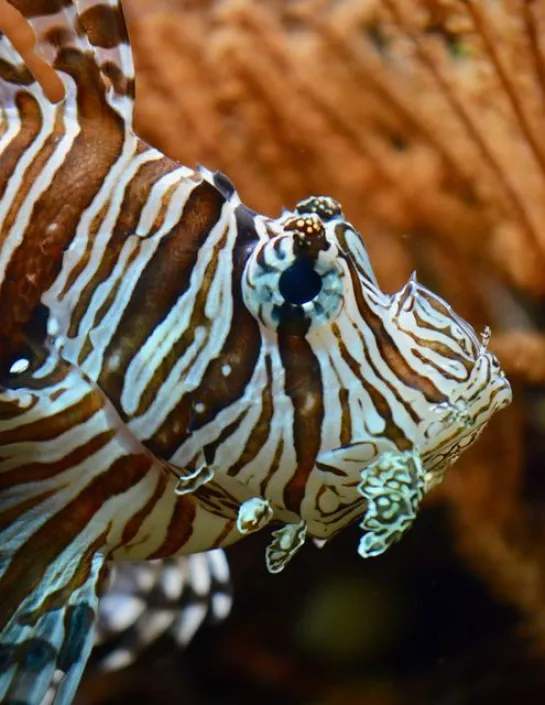
Identity card
Red Lionfish
- Scientific name:
- Pterois volitans
- Family:
- Scorpaenidae
- Class:
- Actinopterygii
- Phylum:
- Chordata
- Year of description:
- Linnaeus, 1758
- IUCN Status:
- Least Concern
- Distribution:
-
Tropical waters of the Eastern Indian Ocean and Western Pacific. They can also be found in the Caribbean Sea.
- Habitat:
-
It lives in lagoons, coral reefs, on rocky slopes or overhangs, in estuaries and dark areas up to 55 metres deep.
- Size:
They can reach a length of 38 cm.
- Diet:
-
Red lionfish eat other fish and crustaceans.
- Longevity:
10 years
